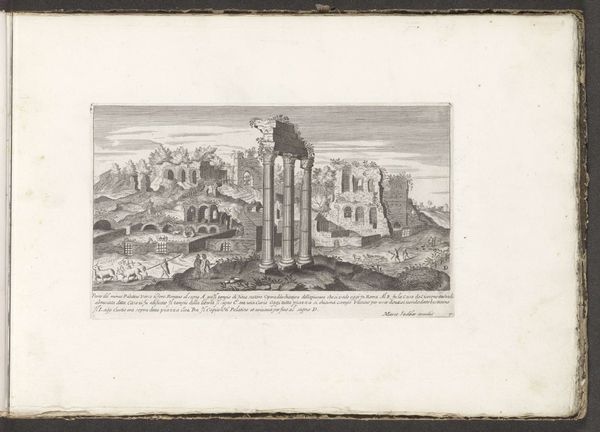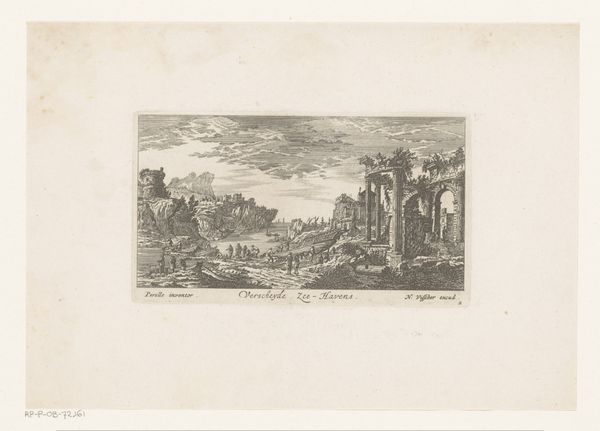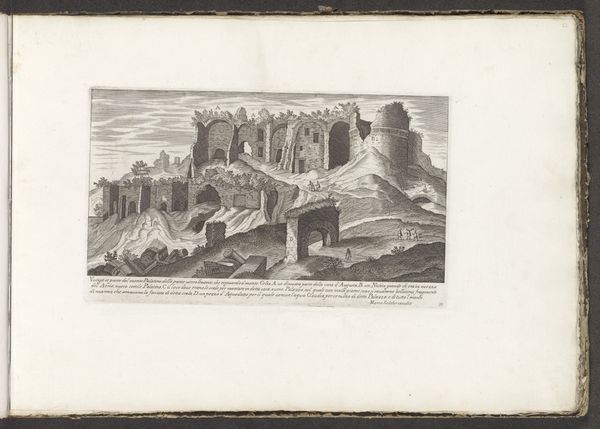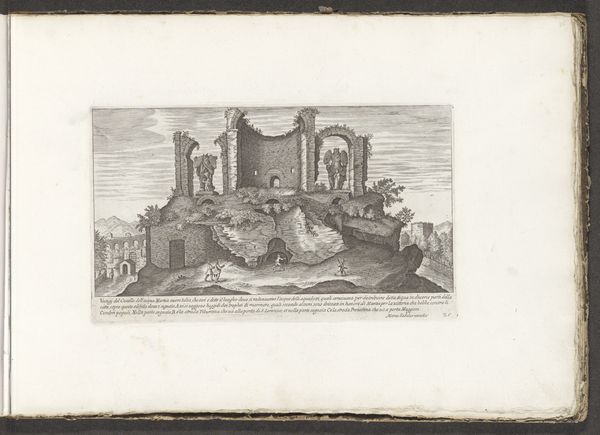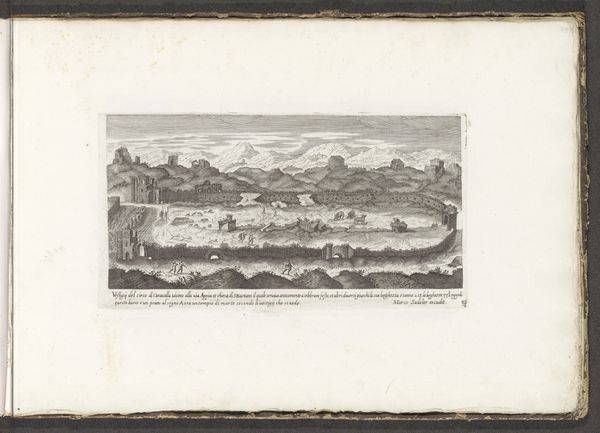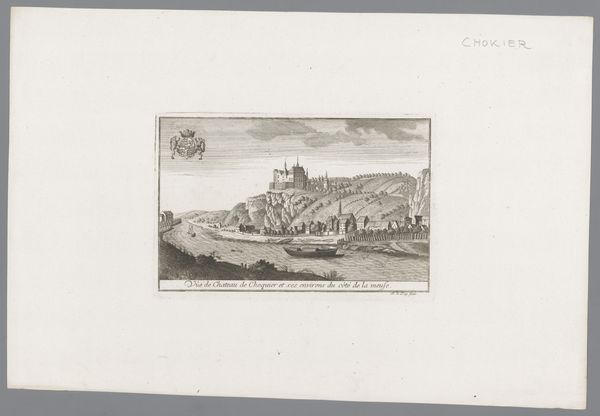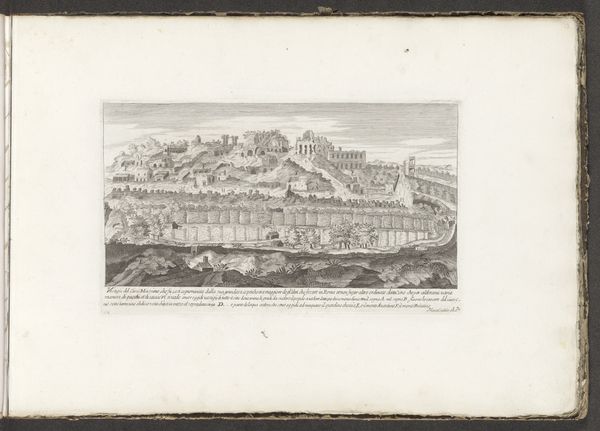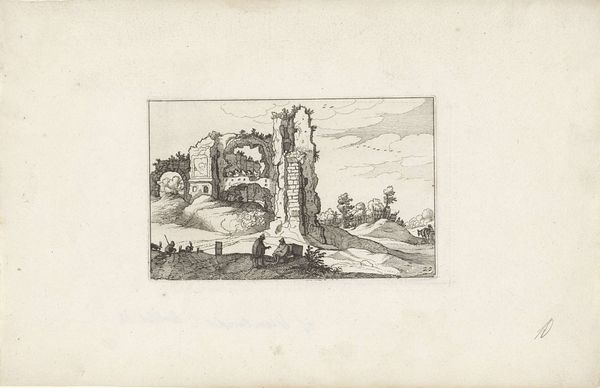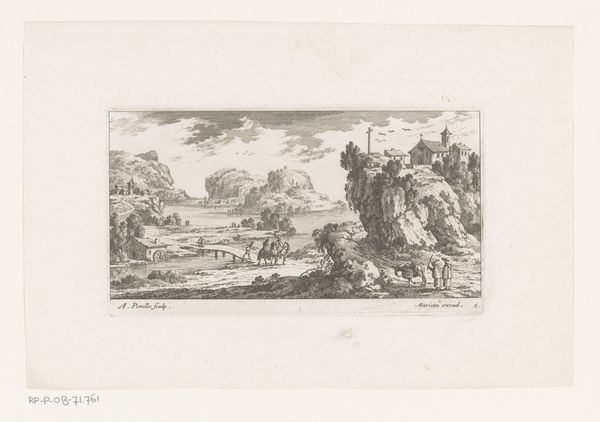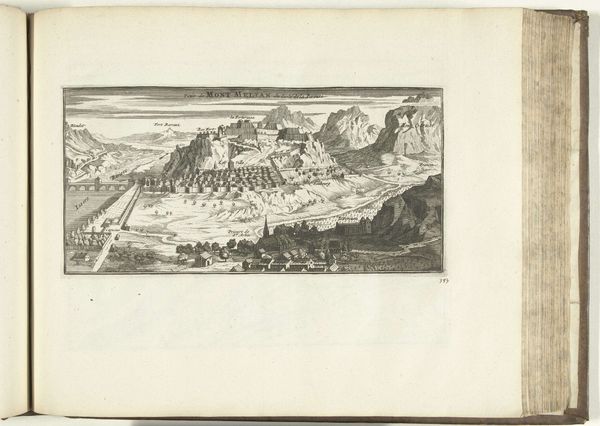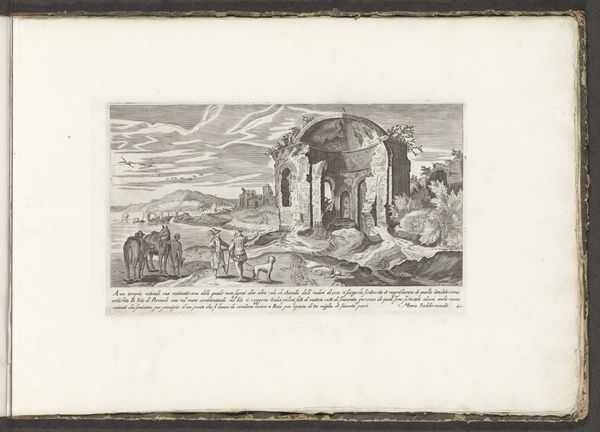
drawing, print, ink, engraving
#
drawing
#
baroque
# print
#
landscape
#
perspective
#
ink
#
cityscape
#
history-painting
#
academic-art
#
engraving
Dimensions: height 150 mm, width 265 mm
Copyright: Rijks Museum: Open Domain
Editor: This print, "Ruins on the Slopes of the Palatine, with the Casa di Tiberio on the Left," dates to 1680. It's rendered in ink with engravings. There is such delicate intricacy here. I am curious – what structural components really catch your eye? Curator: The composition directs our gaze through calculated use of linear perspective. Notice how orthogonals converge to create depth, yet they ultimately emphasize the flattened picture plane. What effect does this have? Editor: I see the spatial recession, yes, but I think that the density of the line work overwhelms it, compressing the pictorial space. Curator: Precisely. The strategic distribution of tonal values serves to define forms, while also contributing to an overall visual tension between recession and surface. Consider the relationship between the graphic elements: how do the ruins themselves function as both subject and structural components? Editor: They provide the form, obviously! The play of light and shadow is compelling and makes great use of the engraver’s marks to create form. Curator: The printmaker emphasizes the interplay of solid and void within the ruins to construct a sophisticated visual dialogue. The graphic quality is intrinsic. I notice also that the lines define edges and textures with considerable accuracy, almost like one might see in the camera obscura. This attention to optical veracity serves what end? Editor: To showcase their technical virtuosity, perhaps? Curator: Indeed. The piece invites appreciation on formal grounds, independent of its representational function, wouldn’t you say? Editor: I certainly appreciate how formal analysis illuminates this historical landscape. Seeing the focus on its graphic structure allows one to enjoy the tension between surface and space.
Comments
No comments
Be the first to comment and join the conversation on the ultimate creative platform.
